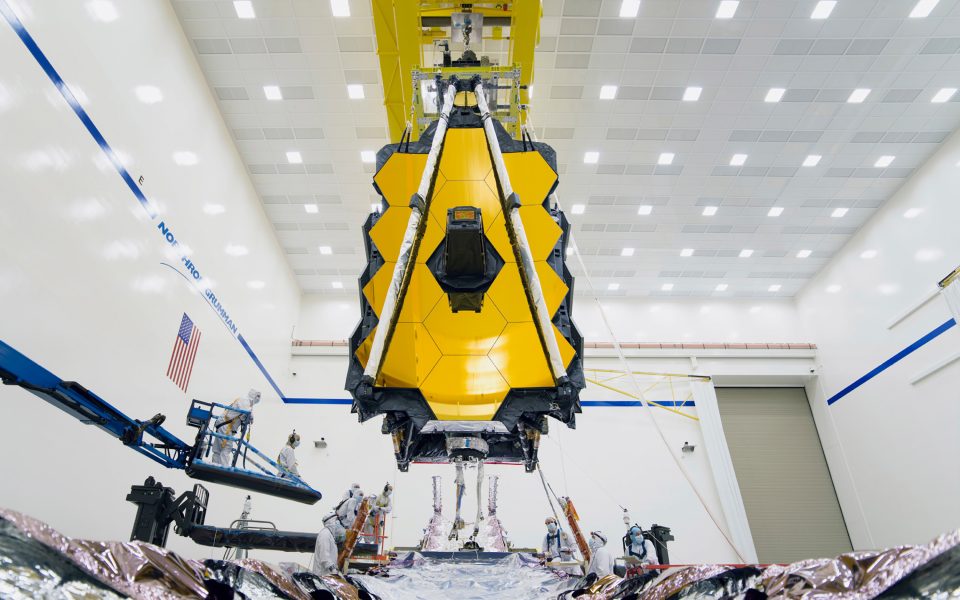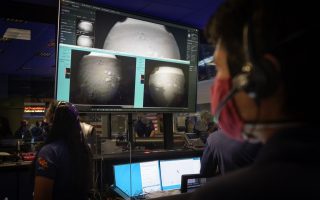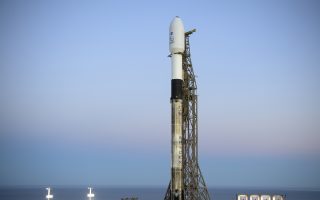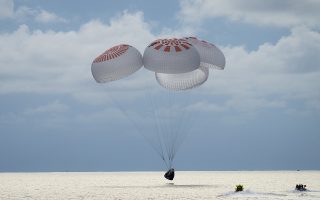How to watch the James Webb Space Telescope launch

If you wake up early enough Saturday, you will be greeted with a spectacle of science and engineering: the launch to orbit of the James Webb Space Telescope.
The telescope is a joint project of NASA, the European Space Agency and Canada’s space agency, and will be the most powerful observatory ever sent into space. Astronomers have waited decades as budgetary and technical delays have stalled the Webb’s completion and launch.
But on Christmas morning, they and the rest of humanity will come one step closer to witnessing the spacecraft begin its scientific mission. Here is what you need to know.
When is the launch, and how can I watch it?
The telescope is scheduled to lift off at 7:20 a.m. Eastern time Saturday from a European-managed spaceport in French Guiana on the coast of South America. The launch window lasts 32 minutes, until 7:52 a.m., in case there are any last-minute rocket checks or brief pauses in the countdown. A longer delay means the launch would be postponed to that same time Sunday.
NASA, the telescope’s primary backer, will host a livestream on its YouTube channel beginning at 6 a.m. and on its main Twitter and Facebook accounts beginning at the same time. Agency officials will provide commentary with astronomers leading up to the launch. You can also register for a virtual launch event.
If you would rather watch the launch in French or in Spanish, the European Space Agency is also streaming the liftoff in those languages.
Why is the Webb telescope so important to scientists?
The Webb telescope was designed to probe a crucial stretch of early cosmic history known to astronomers as the dark ages.
Cosmologists surmise that the first stars appeared when the universe was only about 100 million years old. (Today it is 13.8 billion years old.) The farthest and earliest galaxy seen by astronomers, using the Hubble Space Telescope, dates to when the universe was older, 400 million years after the Big Bang. What happened during those intervening 300 million years when the universe took luminous flight, how the Big Bang turned into a sky full of constellations and life, is a mystery.
The telescope will also help astronomers better study supermassive black holes at the center of galaxies, and planets orbiting other stars in our galaxy.
To achieve these scientific observations, the Webb telescope relies on a primary mirror 6.5 meters in diameter, compared with the mirror on the Hubble, which is 2.4 meters. That gives it about seven times as much light-gathering capability and thus the ability to see further into the past.
Another crucial difference is that it is equipped with cameras and other instruments sensitive to infrared, or “heat,” radiation. The expansion of the universe causes the light that would normally be in visible wavelengths to shift into longer infrared wavelengths normally invisible to human eyes.
Engineers had to invent 10 new technologies along the way to make the telescope more sensitive than the Hubble. Overoptimistic schedule projections, occasional development accidents and disorganized cost reporting dragged the timeline out to 2021 and ballooned the overall cost to $10 billion.
Why is the telescope launching from French Guiana?
The European Space Agency does not have an orbital launch site in any of its member countries on the European landmass. Instead, it typically launches from a spaceport in Kourou, French Guiana.
Using the Kourou launch site is part of the consortium’s 300 million euro contribution to the Webb mission. NASA signed an agreement with ESA to launch Webb on an Ariane 5 rocket from Arianespace, a French rocket-maker, in 2003.
[This article originally appeared in The New York Times.]






